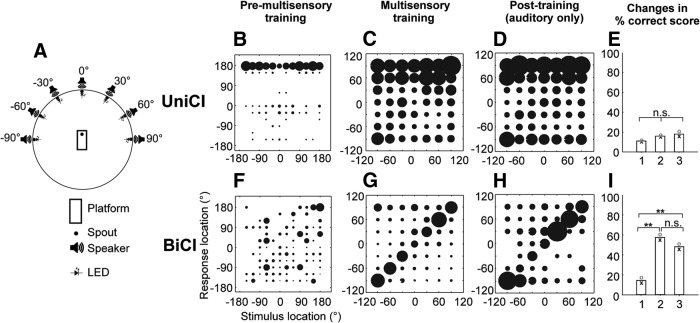Figure 6.
Effect of multisensory training on sound localization accuracy in ferrets with early-onset hearing loss. A, Testing chamber with seven loudspeakers and light-emitting diodes arranged at 30° intervals in the frontal hemifield. Auditory performance of the ferrets with a UniCI (B–E) or BiCIs (F–I) are grouped by training experience. B, F, Stimulus-response plots using all 12 loudspeakers covering the full 360° of azimuth (as in Fig. 4A) before the start of multisensory training with the multisensory setup. At this stage, no difference was found between the performance of animals with a UniCI and those with BiCIs. C, G, Stimulus-response plots for the final session of multisensory training. Subsequently, the visual stimuli were discontinued and animals were trained with auditory stimuli only for another 10 sessions. D, H, Stimulus-response plots for the last of these sound-only sessions. E, I, Mean percentage correct scores before, during, and after multisensory training. No change in auditory localization performance (proportion of correct trials) was found in the ferrets with a single CI, whereas multisensory training resulted in a significant improvement in the bilaterally implanted animals, which persisted after removal of the visual cues. Statistical comparisons are provided in text.

